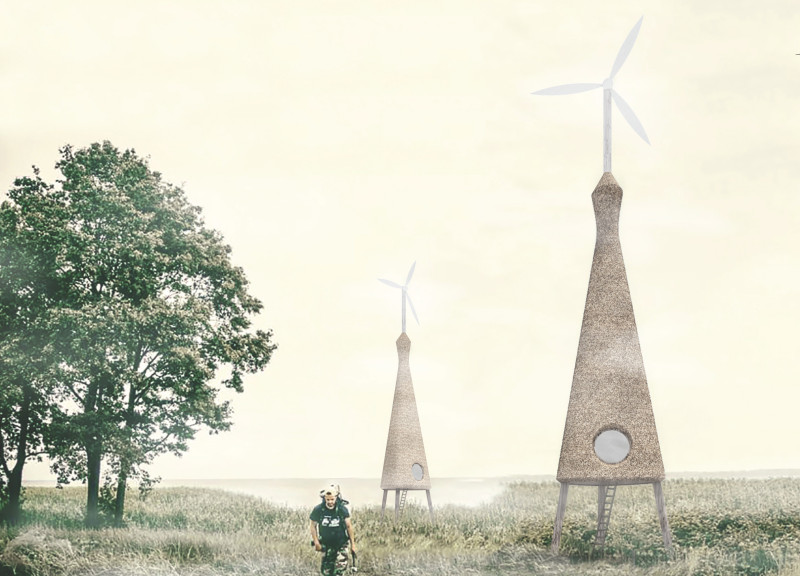5 key facts about this project
Amber Road trekking cabins are situated along the Latvian coast, designed for those looking to connect with nature. They take the shape of traditional tents but are elevated off the ground, providing a unique perspective of the surrounding landscape. The focus of the design is on creating simple shelter that allows for outdoor experiences without the distractions of modern life.
Sustainable Architecture
The design of these cabins highlights sustainability. They stand elevated on three wooden pillars, which supports the structure while minimizing its footprint on the environment. This height offers stunning views and a feeling of being in nature, as if the cabins are part of the landscape rather than an intrusion. This setup facilitates a sense of wilderness and temporary living, with an impression that visitors have arrived in a unique and essential space.
Material Choices
Thick straw envelopes form the walls of the cabins. This traditional building method provides insulation and reflects a commitment to using renewable resources. The cabins achieve energy efficiency by relying on natural cooling during summer and maintaining warmth in winter. These material choices show how the design aims to blend modern needs with eco-friendly practices.
Functional Integration
Connecting with the environment is a key part of the experience offered by the cabins. They include spaces for cooking and socializing outdoors, encouraging visitors to engage with nature in everyday activities. A round window acts as a visual link to the outside, providing views that enhance the occupants' connection to their surroundings. This design choice brings the outdoors in and highlights the natural beauty of the area.
Design Element
A wind turbine provides renewable energy to the cabins, generating power for USB chargers. This feature illustrates the balance between traditional architecture and modern energy solutions. The combination of natural materials and innovative technology creates a thoughtful structure that reflects the importance of living in harmony with nature. It serves as a gentle reminder of how simple shelter can meet contemporary needs while respecting the environment.


























